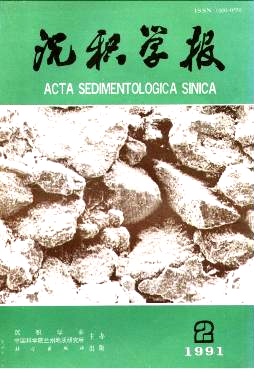Diagenesis of Volcanic Sandstone in Shoushan Basin Especially for the Damaging of Primary Pores and the Forming of Secondary Pores
- Received Date: 1988-11-17
- Publish Date: 1991-06-10
Abstract: Shouchang Basin is an accumulation basin of volcanic sandstone, which located in Shouchang, Zhejiang province, substrata of which is Henshan group of fluvial sediments (Lewer Cretaceous) and the upper is Shouchang group of lacastrine deposit (Upper Jurrasic), both of them are sandstones of low quartz contents, the former is charactrized by plagioclase and lithoclast, and the later is mainly ortheclase and lithoclast. It is the different compositions which led to the different diagenesis of the two groups.Undertaken high temparature and pressure (i.e. above 200@@ and less than 3 kb.), Henshan group undergone early diagenesis with the feature of laumontite formed by hydration; but Shouchang group undergoue late diagenesis characterized by albite formed by dehydration.Diagenetic zonation is obviously in the basin. Diagenetic processes are based on the different mineral compositions and characters of the two groups.In the early diagenetic stage, because of the lack of quartz, primary pores are mainly damaged by compaction, pressur solution, hydration and the regrowth of quarty and feldspar, filling of carbonate can also destroy the primary pores.But the secondary pores can be formed by dehydration and dissolution during late diagentic stage which made the strata be a potential reservoir of oil and gas.
| Citation: | Xu Beimei. Diagenesis of Volcanic Sandstone in Shoushan Basin Especially for the Damaging of Primary Pores and the Forming of Secondary Pores[J]. Acta Sedimentologica Sinica, 1991, 9(2): 93-98. |






 DownLoad:
DownLoad: